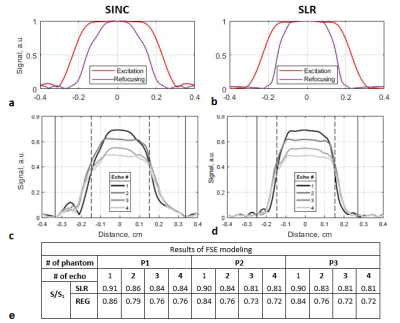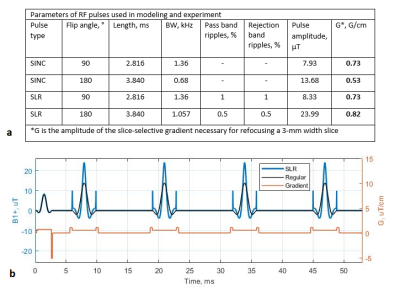Ekaterina A. Brui1, Stanislas Rapacchi2, David Bendahan2, and Anna Andreychenko1,3
1Department of Physics and Engineering, ITMO University, Saint Petersburg, Russian Federation, 2Aix-Marseille Universite, CNRS, Centre de Résonance Magnétique Biologique et Médicale, Marseille, France, 3Center of Diagnostics and Telemedicine Technologies, Department of Health Care of Moscow, Research and Practical Clinical, Moscow, Russian Federation
1Department of Physics and Engineering, ITMO University, Saint Petersburg, Russian Federation, 2Aix-Marseille Universite, CNRS, Centre de Résonance Magnétique Biologique et Médicale, Marseille, France, 3Center of Diagnostics and Telemedicine Technologies, Department of Health Care of Moscow, Research and Practical Clinical, Moscow, Russian Federation
SLR-based FSE together with the metamaterial-based coil for wrist MRI allowed to increase the slice selectivity while still being within the safe SAR limits. The actual energy deposition was decreased as compared to a conventional RF setup.

Excitation (red curves) and refocusing (purple curves) profiles of
regular pulses (a), which are used by default in 1.5 T Siemens Magnetom Avanto
scanner for FSE in "Low SAR" mode, and of the constructed SLR pulses (b) for a
sample with neglected relaxation. Refocusing profiles of four echo signals obtained in steady-state FSE
modeling with regular pulses (c) and SLR pulses (d) (T1 =
329 ms). Black dashed vertical lines indicate the desired slice thickness (TH),
black solid vertical lines indicate the entire refocused area of profiles (TH1). (c) Selectivity metric (S/S1) in FSE modeling.

(a) Parameters
of RF pulses used in modeling and experiment. (b) The evolution in time of RF amplitudes (black and blue curves for regular and SLR-based FSE, respectively) and
slice selection gradient amplitudes with crushers (orange curve) that were generated. An additional crusher gradient was applied in the
end of the cycle (not shown), in order to fully spoil the transverse
magnetization. The
parameters of the pulse sequence: repetition/echo time TR/TE = 550/13 ms, excitation angle α = 90°, refocusing angle β = 180°, inter-echo time IET = 13 ms, echo train length ETL = 4.